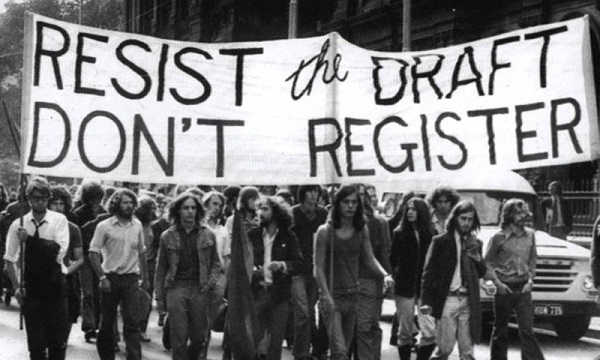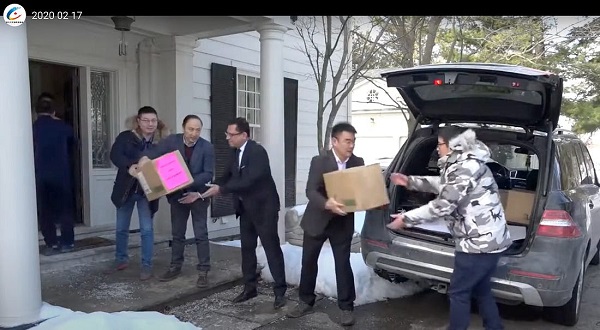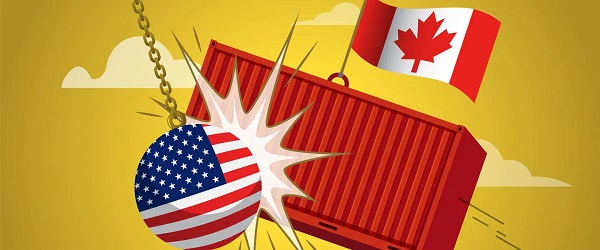Also part of David Redman’s presentation is this comparison between lockdown measures and Canada’s Annual Viral Infection Curve. Redman shows the annual viral infection curve performed exactly as usual in the past year. In this part of the presentation Redman shows how the lockdown restrictions have coincided with the curve and therefore lockdowns have not greatly affected the spread of Covid.
Alberta
No lockdowns in Alberta if Emergency Management Agency was in charge – Former Executive Director David Redman

As Canadians look south of the border it’s obvious different state governments have taken different approaches in the battle against Covid 19. Some states have been opened entirely for months while in others, children haven’t been to school in an entire year. But which approach is better when it comes to reducing Covid cases? The State of Florida has been open during the entire second wave while New York State is just beginning to lift lockdowns. Despite the different approaches in Florida and New York, in both states cases are down to a third or less of where they were in early January. Death rates are also down by two thirds since January in both states.
Alberta’s approach could have been vastly different too. Premier Jason Kenney has the tough job of trying to balance the freedom to gather, to work and to worship, with the mandate to protect the health of Albertans by isolating us from teammates, workmates, and friendships. As the ebb and flow of restrictions continues one year into the Covid experience, a growing number of people are convinced lockdowns are not an effective response. But what is the alternative?
One person qualified to answer this difficult question is David Redman. Redman is former Executive Director of the Alberta Emergency Management Agency. Before that he spent over 25 years in the military, retiring as a Lieutenant Colonel with vast experience in logistics. As ED of the Emergency Management Agency, Redman traveled side by side with then Premier Ralph Klein when tragedy struck the province. His role included formulating plans to deal with a variety of emergencies, including pandemics. When an emergency occurred, the staff would immediately gather with leaders from government agencies and relevant private companies (power companies, etc). Within 36 hours, they’d revise an existing plan and present the Premier with options for moving forward.
The province of Alberta’s website makes a bold statement about emergency management. As this screen shot indicates Alberta’s Emergency Management Agency “leads and oversees all emergency and disaster prevention, preparedness and responses.”

There’s only one problem with this bold statement. In what has become the farthest reaching emergency in modern Alberta history, for some reason Alberta’s Emergency Management Agency is not co-ordinating Alberta’s response. Premier Jason Kenney is co-ordinating Alberta’s response with Health Minister Tyler Shandro, Alberta’s Chief Medical Officer Dr. Deena Hinshaw, and others.
This is not sitting well with David Redman. Redman says when the first wave hit and Alberta announced a general lockdown, Redman was shocked such drastic measures were being taken. He knew immediately the emergency response plan had been thrown out.
Redman began contacting all Canada’s premiers. He put together a presentation to show what they were doing wrong and what they should be doing instead. It’s taken months to gain traction, but the media is starting to pay attention to Redman as he shares his presentation to people all over Canada.
His main message; governments can do a far better job of protecting the vulnerable AND protecting the economy. Even though the second major wave is ebbing and restrictions are slowly disappearing, Redman says the matter is still urgent. He’s convinced Covid variants will ensure future waves and unless they pivot to a new approach, governments will go back to the tool they’ve been relying on… lockdowns.
This is an abridged version of the presentation Redman has been showing all over the country is his effort to get at least one Premier to show the rest of Canada a different way to react to this emergency.
Alberta
Made in Alberta! Province makes it easier to support local products with Buy Local program

Show your Alberta side. Buy Local. |
When the going gets tough, Albertans stick together. That’s why Alberta’s government is launching a new campaign to benefit hard-working Albertans.
Global uncertainty is threatening the livelihoods of hard-working Alberta farmers, ranchers, processors and their families. The ‘Buy Local’ campaign, recently launched by Alberta’s government, encourages consumers to eat, drink and buy local to show our unified support for the province’s agriculture and food industry.
The government’s ‘Buy Local’ campaign encourages consumers to buy products from Alberta’s hard-working farmers, ranchers and food processors that produce safe, nutritious food for Albertans, Canadians and the world.
“It’s time to let these hard-working Albertans know we have their back. Now, more than ever, we need to shop local and buy made-in-Alberta products. The next time you are grocery shopping or go out for dinner or a drink with your friends or family, support local to demonstrate your Alberta pride. We are pleased tariffs don’t impact the ag industry right now and will keep advocating for our ag industry.”
Alberta’s government supports consumer choice. We are providing tools to help folks easily identify Alberta- and Canadian-made foods and products. Choosing local products keeps Albertans’ hard-earned dollars in our province. Whether it is farm-fresh vegetables, potatoes, honey, craft beer, frozen food or our world-renowned beef, Alberta has an abundance of fresh foods produced right on our doorstep.
Quick facts
- This summer, Albertans can support local at more than 150 farmers’ markets across the province and meet the folks who make, bake and grow our food.
- In March 2023, the Alberta government launched the ‘Made in Alberta’ voluntary food and beverage labelling program to support local agriculture and food sectors.
- Through direct connections with processors, the program has created the momentum to continue expanding consumer awareness about the ‘Made in Alberta’ label to help shoppers quickly identify foods and beverages produced in our province.
- Made in Alberta product catalogue website
Related information
Alberta
Province to expand services provided by Alberta Sheriffs: New policing option for municipalities

Expanding municipal police service options |
Proposed amendments would help ensure Alberta’s evolving public safety needs are met while also giving municipalities more options for local policing.
As first announced with the introduction of the Public Safety Statutes Amendment Act, 2024, Alberta’s government is considering creating a new independent agency police service to assume the police-like duties currently performed by Alberta Sheriffs. If passed, Bill 49 would lay additional groundwork for the new police service.
Proposed amendments to the Police Act recognize the unique challenges faced by different communities and seek to empower local governments to adopt strategies that effectively respond to their specific safety concerns, enhancing overall public safety across the province.
If passed, Bill 49 would specify that the new agency would be a Crown corporation with an independent board of directors to oversee its day-to-day operations. The new agency would be operationally independent from the government, consistent with all police services in Alberta. Unlike the Alberta Sheriffs, officers in the new police service would be directly employed by the police service rather than by the government.
“With this bill, we are taking the necessary steps to address the unique public safety concerns in communities across Alberta. As we work towards creating an independent agency police service, we are providing an essential component of Alberta’s police framework for years to come. Our aim is for the new agency is to ensure that Albertans are safe in their communities and receive the best possible service when they need it most.”
Additional amendments would allow municipalities to select the new agency as their local police service once it becomes fully operational and the necessary standards, capacity and frameworks are in place. Alberta’s government is committed to ensuring the new agency works collaboratively with all police services to meet the province’s evolving public safety needs and improve law enforcement response times, particularly in rural communities. While the RCMP would remain the official provincial police service, municipalities would have a new option for their local policing needs.
Once established, the agency would strengthen Alberta’s existing policing model and complement the province’s current police services, which include the RCMP, Indigenous police services and municipal police. It would help fill gaps and ensure law enforcement resources are deployed efficiently across the province.
Related information
-

 espionage2 days ago
espionage2 days agoEx-NYPD Cop Jailed in Beijing’s Transnational Repatriation Plot, Canada Remains Soft Target
-

 2025 Federal Election2 days ago
2025 Federal Election2 days agoBREAKING from THE BUREAU: Pro-Beijing Group That Pushed Erin O’Toole’s Exit Warns Chinese Canadians to “Vote Carefully”
-

 Daily Caller2 days ago
Daily Caller2 days agoTrump Executive Orders ensure ‘Beautiful Clean’ Affordable Coal will continue to bolster US energy grid
-

 Daily Caller2 days ago
Daily Caller2 days agoDOJ Releases Dossier Of Deported Maryland Man’s Alleged MS-13 Gang Ties
-

 2025 Federal Election2 days ago
2025 Federal Election2 days agoAllegations of ethical misconduct by the Prime Minister and Government of Canada during the current federal election campaign
-

 John Stossel2 days ago
John Stossel2 days agoClimate Change Myths Part 1: Polar Bears, Arctic Ice, and Food Shortages
-

 Business2 days ago
Business2 days agoChina, Mexico, Canada Flagged in $1.4 Billion Fentanyl Trade by U.S. Financial Watchdog
-

 Opinion2 days ago
Opinion2 days agoLeft Turn: How Viet Nam War Resisters Changed Canada’s Political Compass








